LANDSCAPING
One of the key elements of a successful modern home is how well it harmonizes with the natural world. Thoughtful landscaping will maintain the tension between the built environment and the natural environment. The word to remember here is “balance.” For instance, if your exterior is plywood sheeting, then an apron of concrete enclosing the perimeter will create a beautiful balance. A successful landscape balances large, chunky species with their spindly, sticklike counterparts.
To start, take stock of the native plants and existing garden installations. Survey the site and jot down a few notes about the landscape that is and your hopes for the landscape that will be. Then close your eyes and conjure a natural outdoor space. If you imagine a prairie, turn one corner of the yard into a hedge of wispy grasses. If you visualize a verdant rain forest, turn a patch of the yard into an expanse of stone punctuated by stark palms. The process begins by thinking big and then editing your vision down to one or two plantings that hint at the inspiration behind the design.
Natural Selection
Flora is a key element in creating an outdoor tableau. It can be difficult to find just the right species to complement a contemporary structure. Spiky plants work best—agave, cactus, yucca, prickly pear varieties, and the like. Leaves should have ragged, sharp teeth. Trunks should be stoic, hardy, and impenetrable. Birdhouses, rope hammocks, and garden gnomes are discouraged, unless you are well versed in the art of irony. But irony is risky and requires years of study.
CACTI/SUCCULENTS
 Pros: Geometric, low maintenance, and hardy with a retro Laurel Canyon vibe.
Pros: Geometric, low maintenance, and hardy with a retro Laurel Canyon vibe.
 Cons: Shrivel without loads of sun.
Cons: Shrivel without loads of sun.
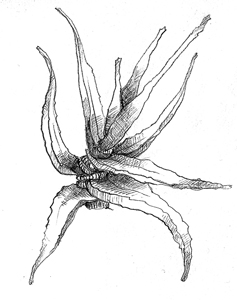
Aloe
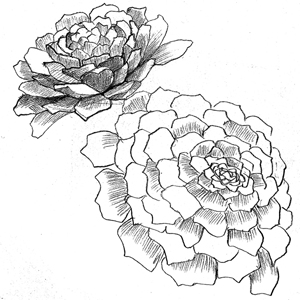
Sedum
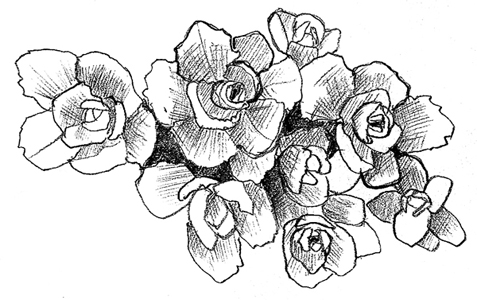
Sempervivium
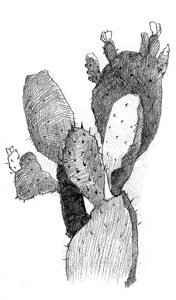
Prickly pear
GRASSES
 Pros: Native grasses mimic the strong lines of modern architecture.
Pros: Native grasses mimic the strong lines of modern architecture.
 Cons: Havens for deer ticks, ground snakes, and chinch bugs. Can be mistaken for a lawn in need of mowing.
Cons: Havens for deer ticks, ground snakes, and chinch bugs. Can be mistaken for a lawn in need of mowing.
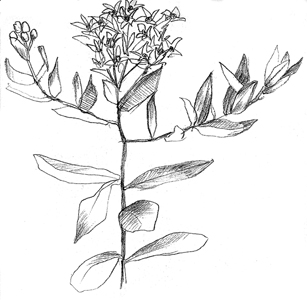
Bastard toadflax
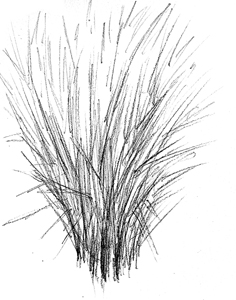
Switchgrass
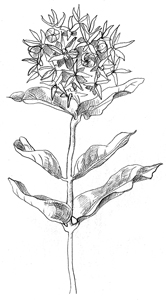
Showy milkweed
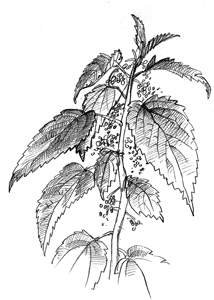
Stinging nettle
BAMBOO
 Pros: Tall and spindly. Although invasive, seemingly an eco-minded choice.
Pros: Tall and spindly. Although invasive, seemingly an eco-minded choice.
 Cons: Attracts pandas.
Cons: Attracts pandas.

Clumping bamboo
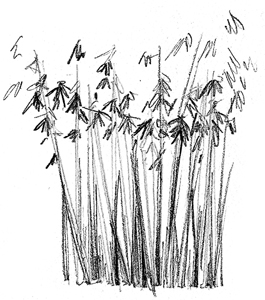
Running bamboo
AGAVE
 Pros: Related to genus Yucca, which lends itself to affected pronunciation.
Pros: Related to genus Yucca, which lends itself to affected pronunciation.
 Cons: Almost impossible to maintain in cold climates.
Cons: Almost impossible to maintain in cold climates.
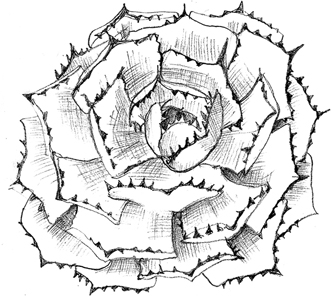
Kichiokan

Agave attenuata
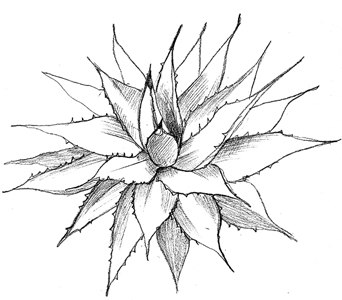
Agave horrida

Durango delight

PRACTICAL CONSIDERATION
 Beware of flowering species, as they rarely convey the necessary gravitas.
Beware of flowering species, as they rarely convey the necessary gravitas.
 Avoid species and cultivars described with terms such as “rosette,” “prairie,” or “ornamental.”
Avoid species and cultivars described with terms such as “rosette,” “prairie,” or “ornamental.”
 Purchase a splendid pair of Japanese secateurs and display prominently when offering friends a tour of the garden.
Purchase a splendid pair of Japanese secateurs and display prominently when offering friends a tour of the garden.
 You can secretly treat your crops with banned chemical pesticides like DDT to keep garden pests at bay. To avoid suspicion, spray at night and make a great show of watering your plants from a gray-water cistern or rain catchment during the day.
You can secretly treat your crops with banned chemical pesticides like DDT to keep garden pests at bay. To avoid suspicion, spray at night and make a great show of watering your plants from a gray-water cistern or rain catchment during the day.
 If you have the misfortune of inheriting a landscape full of mature privets, trim the hedges down to cubes no more than two feet high to achieve a grounding effect on these otherwise abhorrent shrubs.
If you have the misfortune of inheriting a landscape full of mature privets, trim the hedges down to cubes no more than two feet high to achieve a grounding effect on these otherwise abhorrent shrubs.
I don’t divide architecture, landscape, and gardening; to me they are one.
LUIS BARRAGÁN (1902–1988)
Considered the most important Mexican architect of the twentieth century, Barragán studied engineering but was self-taught as an architect. He was born into a wealthy family, but co-opted the saturated paint-washed walls of traditional Mexican country homes for his modern structures, including many skyscrapers that dot Mexico City’s skyline. Little is known about his personal life, although it’s commonly understood that the immensely private Barragán was very religious and deeply closeted about his homosexuality.
 Notable Works: Barragán house. Tlalpan chapel. San Cristóbal Estates.
Notable Works: Barragán house. Tlalpan chapel. San Cristóbal Estates.
Throwing Stones
Gravel is an important outdoor element, whether used for ground cover, garden beds, pathways, or lawns. Lest you get irritatingly pleased with yourself over the decision to landscape with rocks, keep in mind that you’re not the first to cultivate this schema. These “dry” landscapes have a storied history that begins in Asia. While most associate rock gardens with Japan, Zen Buddhists in China were the first to incorporate petrified minerals into a controlled landscape. However, the most famous remain the karesansui in Japan, where stones are arranged to create pleasing patterns and raked into perfect lines with specialized tools.
Today’s dry landscapes aren’t raked (too predictable, with all those miniature desktop Zen gardens languishing in the waiting rooms of psychiatry offices) but merely scattered. Stone eliminates the need for irrigation, weeding, and other costly maintenance. Approach the process as you would when choosing wall paints: bring home “swatches” (rock samples) to compare and contrast. Consider sheen, surface, and size.
Nothing sets off a modern exterior like a raw surface. The term “scorched earth” originated in the military, where it was used to describe the operational strategy of destroying anything that might be useful to the enemy as you advance into their territory. Although the practice is banned under the Geneva Conventions, there’s no law against reclaiming the technique for use at home. Simply obtain a burning permit and raze the premises with fire, backhoe, and small explosives. Maintain the look by spreading silica desiccant gel twice a year.
GRAVEL TYPES
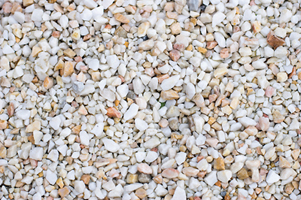
CLASSIC
Crushed limestone works well for wide expanses.

CRYSTALLINE
Quartz with a slightly jagged profile is suitable for small courtyards.
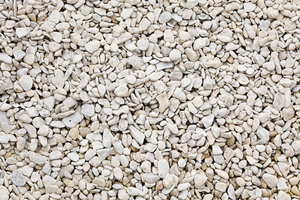
CLASSIC LITE
Slightly whiter crushed limestone is best used to edge planting beds.
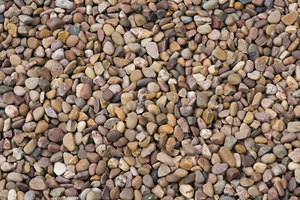
DOMED
Old-school pebbles are best for walkways, French drains (troughs that redirect groundwater), and patios.
PRACTICAL CONSIDERATION
Enjoying a gravel lawn requires dedication and practice—namely, toughening your feet into little calloused hooves. Begin by exposing your tender toes to the elements in a controlled environment; create a small indoor gravel pit and practice walking, standing, and generally massaging the soles.

